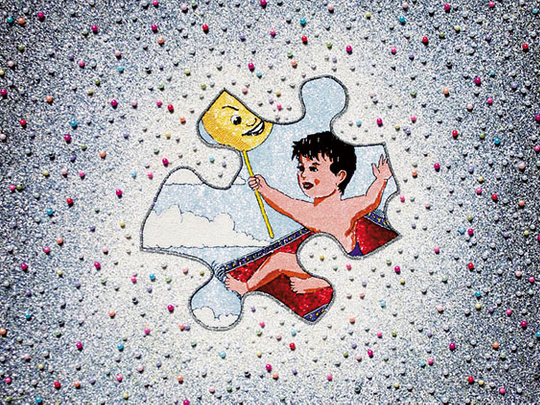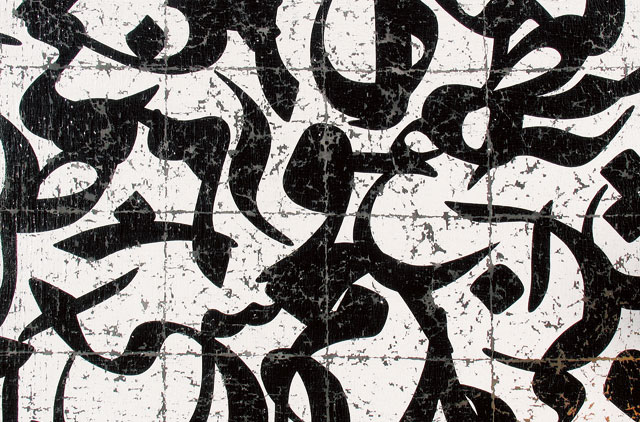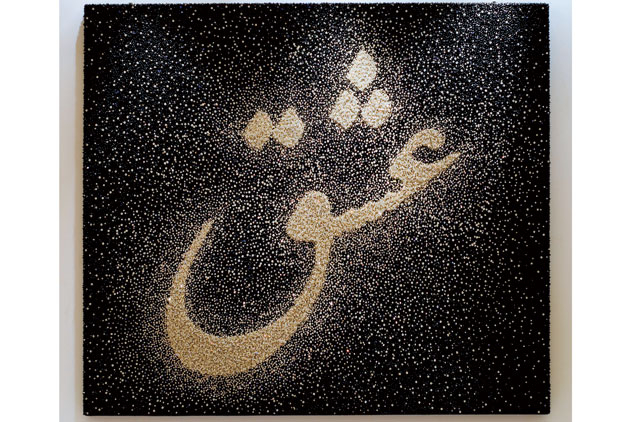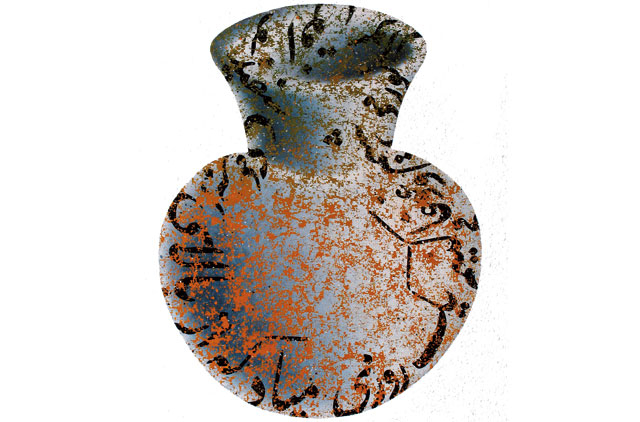
Farhad Moshiri was never dead set on being an artist. “I kind of cornered myself into art,” he says. “In fact,” he adds matter of factly, “I was sure I was going to be an architect.”
While a prospective career as an architect might well have suited him, it’s clear – judging by the success of his intelligently cynical yet subjectively truthful artwork – that he made the right career move. And while being an artist hasn’t always raked in the cash, that all changed in 2008 with the auction of his Eshgh – Love piece in Dubai.
Featuring a generous sprinkling of Swarovski crystals and glitter on canvas that spelt out the word ‘Love’ in Farsi, Eshgh – Love pulled in Moshiri a cool $1 million, making him the first Iranian artist to beat the six-zero mark.
While some art followers interpreted his first mega-sale as selling out (one artist went as far as saying he’d “amputated his Iranian heart and replaced it with a cash register”), Moshiri says he makes art for the sake of making art. Speaking about what inspires him, he says, “Death and the passage of time. To know that one day none of us will be here, it gives me some solace to know that at least my paintings will be. A part of me will be literally hanging around a while longer. That’s enough incentive for me to work as hard as I can!”
Born in Shiraz, Iran, Moshiri studied at the California Institute of the Arts before returning to Iran in the 90s. Still living there now, he can certainly attribute some of his initial success to his home country. Inspired by old ceramic jars he’d seen in a museum in Iran, some of Moshiri’s most well-known pieces came in the form of mottled Iranian jars painted on canvas and overlaid with Farsi text drawn from modern sayings and pop songs.
This juxtaposition of old and new, tradition and modernity are common themes throughout his work although Moshiri’s recent pieces appear to be influenced by modern-day excesses – think technology, food, money, advertising and even Americanisms.
Using a variety of techniques and materials ranging from traditional Iranian embroidery to paint diffused through cake icing dispensers and even knives through canvas, Moshiri’s pieces are certainly some of the more inspiring forms of visual commentary to come out on the state of the world today.
Catch Farhad Moshiri’s work at The Third Line gallery from March 14 to April 14. www.thethirdline.com











